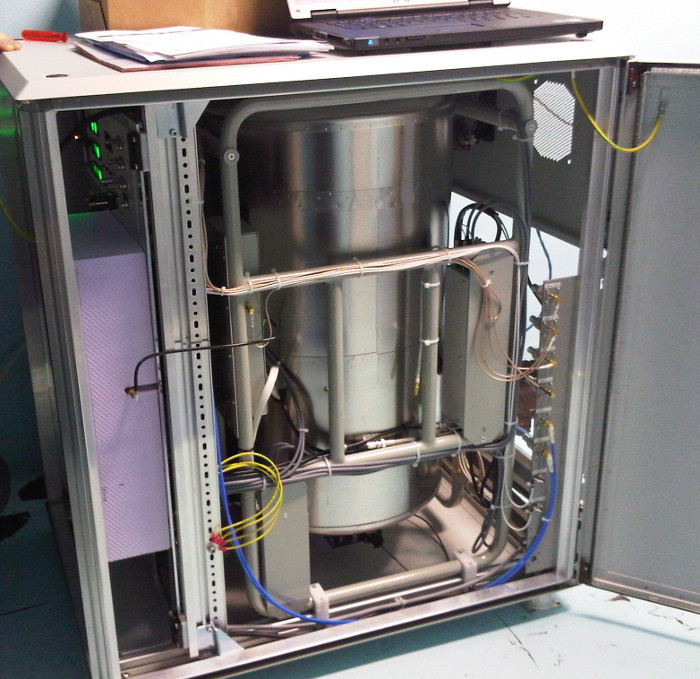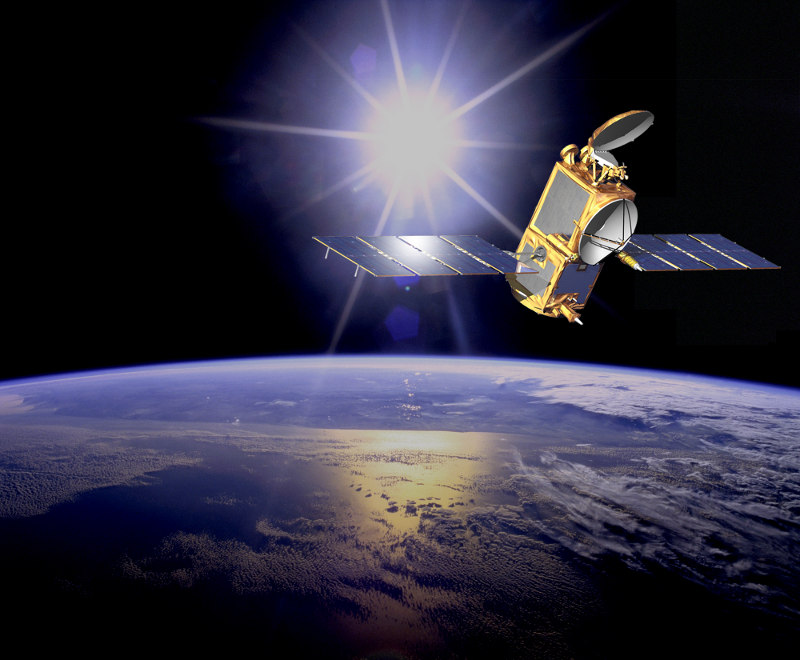Active Hydrogen Maser

The SGF has its own timescale, closely but not exactly matching UK time. The is provided by an Active Hydrogen Maser installed in the facility basement.
The hydrogen maser uses a physical property of atomic hydrogen as a reference frequency source that is stable to 2 x 10-16 seconds per day. After setting the time, the maser is free running and provides time to the SGF with a slight drift, which is every so often modified to keep close to Universal Time (UT1).
The SGF operates an iMaser from T4Science. The maser was delivered in December 2009, and installed in the northern-most end of the basement in January 2010.
The frequency source is supplied directly to a Septenrio PolarX 3ETR GNSS receiver connected to the HERS site. This has been used to characterise the maser frequency drift and performance, which is well within specification.
From May 2010 the maser one-second tick and 10MHz frequency have been used as the source for driving all laser ranging systems. All SLR measurements are therefore benefiting from the more stable frequency source, and time-tag epochs are not being steered to UTC as was the GPS-derived timescale. To take account of the inevitable long term drift of the maser (~50ns after 30 days) the SLR maser-epochs are corrected using a predicted drift of the maser against UTC, whilst also monitoring and checking this offset in real time.

Image courtesy of JPL.
The laser fire times during SLR are recorded and submitted to the mission providers. These are matched with detections made at the satellites and recorded by the onboard clocks. These missions can compare SGF time with the clocks onboard the satellites and with other clocks used by other SLR stations.
The T2L2 payload aims to precisely characterise the USO (ultra-stable oscillator) used by the DORIS positioning system and can compare ground clocks. particularly those in common view, with an accuracy of better than 100ps.

